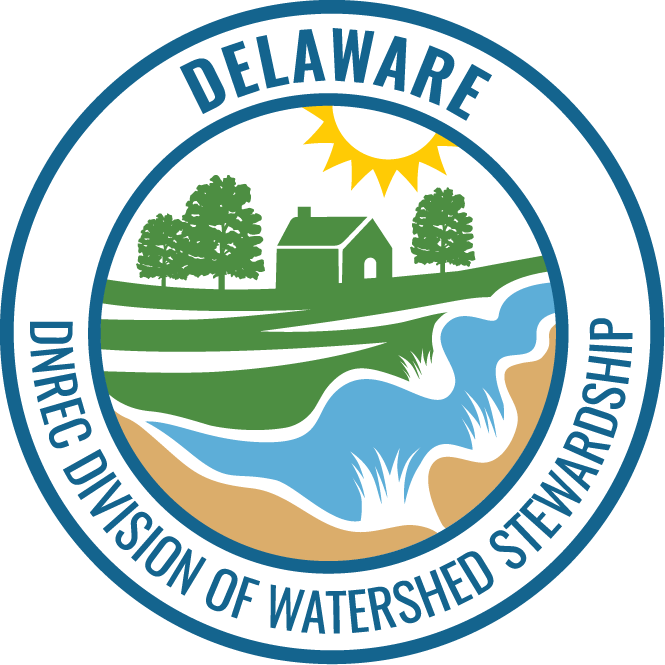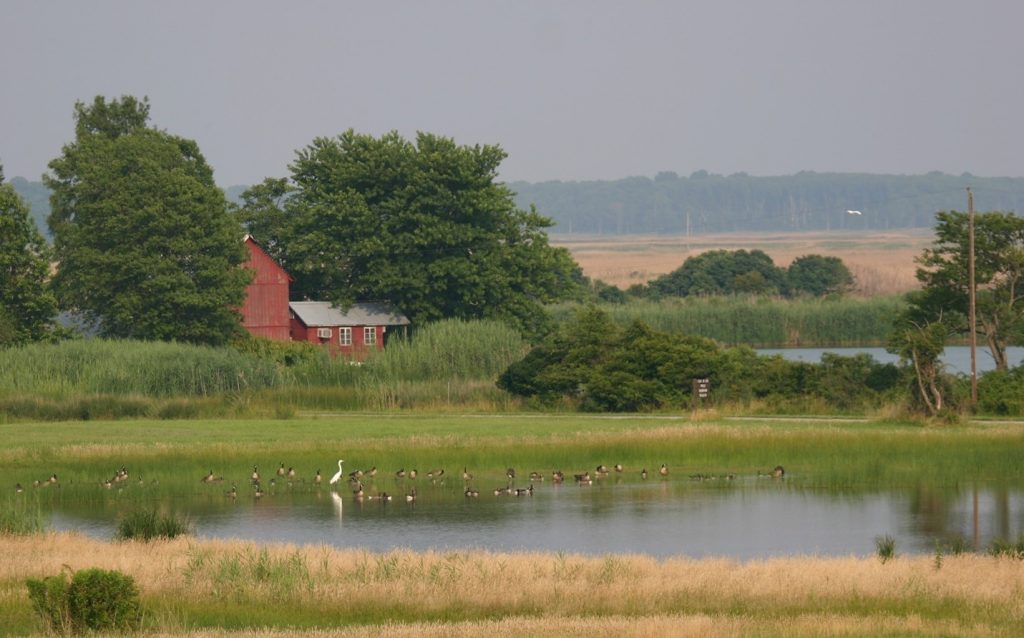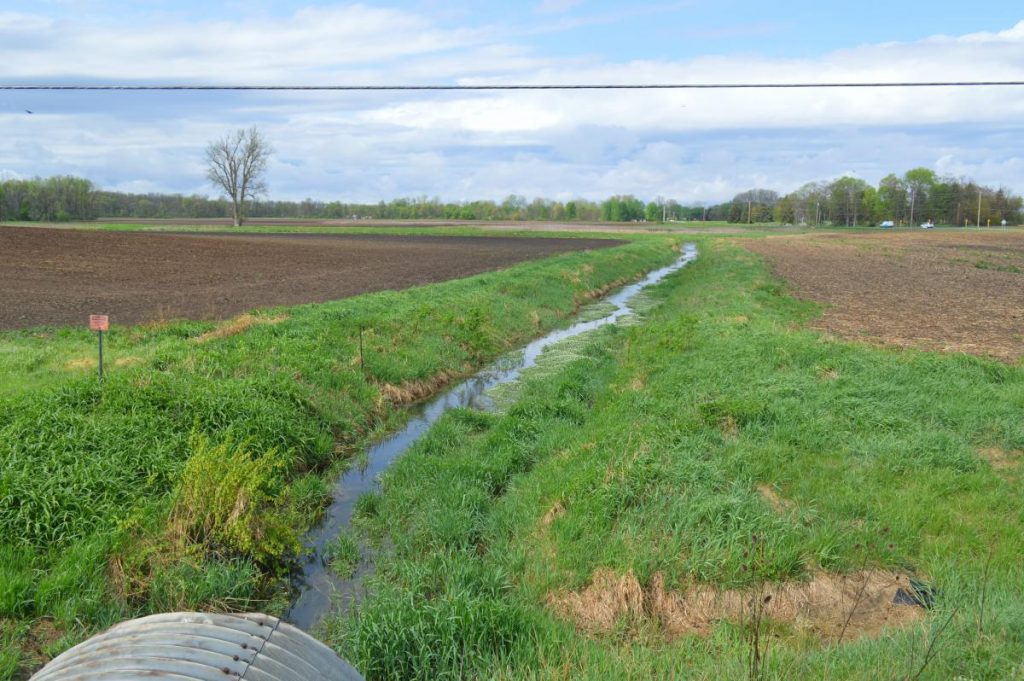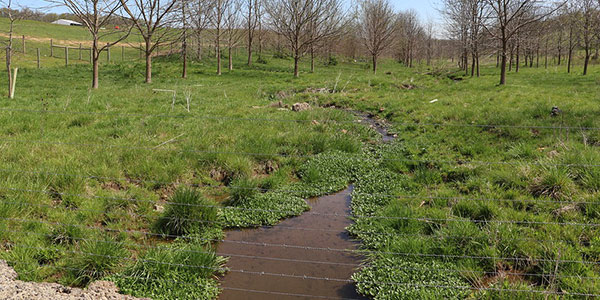
Facebook Twitter Instagram YouTube
Written on: December 14th, 2023 in Education and Outreach, Living Shorelines
By Alison Rogerson, DNREC’s Wetland Monitoring and Assessment Program
Hot off the press this month from the Delaware Living Shorelines Committee is a guidance document that aims to help landowners and professionals design and install nature-based shoreline stabilization projects. The Techniques and Application of Living Shorelines in Delaware guidance is the newest resource released by the Delaware committee, whose primary goal is to increase the frequency and success of living shorelines across the state.
The Techniques and Application guidance presents a compilation of common design configurations, and an overview of commonly used materials to help users conceptualize an appropriate and successful living shoreline. This guidance is the closest thing to a living shoreline cookbook as it can be. Due to an infinitely diverse set of conditions and factors in every shoreline situation, it is important to make each project a custom design that isn’t cookie cutter.
The first chapter encourages the user to define their project classification and select their project-specific goals before any design work is done; a conventional or hybrid classification? and then shoreline position, habitat, or water quality goals? The proper three-step process starts by defining project class and goals, followed by selecting design elements to meet those goals, finished by selecting materials to build those design elements.
Chapter two runs through eight significant shoreline stabilization design concepts where a living component is always present. This is where broad decisions can be made to order based on conditions and goals. These descriptions are super helpful by breaking information down as common uses, common materials used in that design element, how that element can help or hinder goals, what ecological opportunities the element provides (e.g. for oysters, SAV, sediment deposition, wildlife passage), and important limitations and considerations (navigational hazards, energy deflection, short lifespan, wildlife impingement).
The third chapter is a breakdown of seven common materials used in living shorelines. Each section includes a nice description of the material, how they are installed, their typical lifespan, and how they can expect to support life as the project settles in. Especially nice are the color-coded tables indicating which specific project goal that material can contribute to. For example, in the table below, rock material can be effective in reducing wave energy and provides a durable way to change vertical and horizontal shoreline position but has limitations with drainage (related to fish and sediment passage) and is not ideal for providing valuable habitat.
Lastly, for a little more help with visualization, is a chapter dedicated to showcasing case study examples of various designs and techniques installed around Delaware. Each of the seven examples highlights varying energy levels, design elements and materials. Each simple project-specific flyer runs through overall details, describes starting conditions, mentions the permits used, and lists out the design elements and materials that were incorporated. Lots of project photos show the reader before and after.
After completing these steps, a user should have a solid and reasonable idea to draft into drawings that can be included with permit applications and cost estimates. By thoughtfully selecting the components and materials, users are less likely to be surprised by unexpected setbacks and are more likely to reach their intended project goals.
From its inception, the Standards of Practice Sub-committee envisioned this guidance to be the next resource to fit into the suite of tools drafted by the Delaware Living Shorelines Committee that helps users through the entire process of embracing green designs to address shoreline protection and restoration needs. Other crafted resources cover topics such as site evaluation and feasibility to decide if and where a living shoreline would be appropriate, and goal-based monitoring to track success after construction.
Want to learn more about living shorelines and stay in touch with new developments? Sign up to for an upcoming webinar or catch up on past webinar recordings. Especially for professionals working in Delaware, stay tuned for details in the new year about the annual Introduction to Living Shorelines Training Workshop. Professionals interested in joining the Delaware Living Shorelines Committee should contact Committee Chair, Alison Rogerson alison.rogerson@delaware.gov. Landowners just getting started can find a provider to help them and shop for materials nearby.
Written on: December 14th, 2023 in Education and Outreach, Natural Resources, Wetland Restoration
By Phil Miller, DNREC’s Division of Watershed Stewardship
Throughout the world, the importance of Agriculture is no secret, and here in Delaware, that’s no different. If you’ve ever taken a drive through the countryside of Kent or Sussex County, you’ll pass through miles of farms producing crops, poultry, and other agricultural products for use by local communities and nearby major cities. Because of Delaware’s centralized location, producers can reach one-third of the U.S. population, within an eight-hour drive, earning the title of a “foodshed.” Foodsheds are specific geographic locations that provide food for a population, and Delaware is a perfect example.


With almost 40% of land in Delaware devoted to agriculture, making it the primary land use, you might picture much of it being owned by large companies. In fact, according to the Department of Agriculture, “about ninety percent of farms are either sole or family proprietorships or family-owned corporations.” Many of these operations are owned by families who have managed this land for generations and understand the connection between the land, waterways, wildlife, and the overall quality of Delawarean’s lives.
Understanding the importance of this connection is key to maintaining a natural balance between healthy watersheds and agricultural practices. While farms play a very crucial role in the survival of much of the U.S. population, they can also be a nonpoint source (NPS) of pollution. NPS pollution, different from point source pollution such as industrial and sewage treatment plants, comes from runoff caused by rainfall or snowmelt, moving over or under the ground. Unmanaged runoff from farms is one of the leading nonpoint sources of pollution. This can be from sedimentation where soil is washed off fields and carried to nearby streams and lakes, or excess nutrients finding its way to local waterways in the form of chemical fertilizers, manure, and sludge.
Nutrient and sediment pollution are two leading factors of impairments to Delaware’s waterways. Well- informed farmers know the importance of installing practices that will improve the health of their watersheds, which in return can provide better products. Certain conservation practices are essential for improving local water quality, which not only benefits the farm, but also the economy, local wildlife, human health, and recreational activities like fishing and swimming. Agricultural producers with cropland or marginal pastureland in Delaware, may work with State and Federal partners to reserve portions of this land in production for conservation, and receive payments through the Conservation Reserve Enhancement Program (CREP).

Through CREP, conservation practices are installed that are designed to reduce nutrient and sediment loadings in impaired streams. They also improve water temperature and levels of dissolved oxygen, which are necessary to support biology and wildlife. Eligible practices include projects such as restoring wetlands and creating shallow water areas for wildlife. Hardwood tree plantings, creating permanent wildlife habitat, planting riparian forested buffers, and installing filter strips are also eligible for CREP.
Among other benefits, restoring wetlands and similar practices allow for water to soak naturally into the ground acting as a filter, rather than creating runoff. Programs like CREP are essential for maintaining the balance between agriculture and healthy sustainable watersheds. To learn more about CREP or to see if your land is eligible, please visit the DNREC webpage here.
Written on: December 14th, 2023 in Education and Outreach, Wetland Research
By Alison Stouffer, DNREC’s Wetland Monitoring and Assessment Program
While you may be sweating out in the field, you shouldn’t be sweating your appearance. With just a few staple pieces, you can dress to impress on the environmental runway. This guide will provide you with the basics of field fashion so you can turn heads (ignore the confused looks and raised eyebrows) and tackle your work in style.
General Attire
Regardless of the season, dressing for the field is easy. Simply open that drawer in the depths of your closet where you keep your old cotton t-shirts and long sleeves from high school and pull out your favorite one! Now, if you’re like me, these shirts likely have a fair number of small holes dotting them. I like to think of these imperfections as the key to the perfect field fit. Every hole is an opportunity to release the pungent smell of hard work that comes with conducting fieldwork. Of course, a shirt alone doesn’t always provide the necessary protections against the elements. Additional layers in the form of sun sleeves (a unanimous favorite of my colleagues), sun shirts, button-up collared shirts, sweatshirts, rain ponchos, and even ski jackets can be incorporated as needed to really complete the look.
Once you’ve got your top down, it’s time to move to the bottoms. Like any other runway, you might want to try to match your pants and shirt for a cohesive look. I would suggest sticking with variations of tan, black, or gray. Not only will these compliment your cherished high school shirt, but they are also likely the only colors you have to choose from when it comes to quick-dry pants. For some added flair, consider convertible pants that can be zipped off into shorts and/or pants with lots of pockets (imagine all the snack storage). These add both style and functionality to your field fashion.
On special occasions, you might have to pull out all the stops. I’m talking about wetsuits and waders – the power suits of the environmental field. Just remember, whether you are rocking a t-shirt and pants or a wetsuit and waders, every layer is a barrier to rapid dis-robbing in the event of an emergency bathroom break!
Footwear
The second most important component of your funky field fit is footwear. While a tasteful loafer or bold chunky heel might please the fans of a traditional runway, we are big supporters of the classic boot. At first glance, a boot might seem rather basic. However, here on the environmental runway, boots can be of the hiking, ankle, knee, or hip variety. What they lack in proper fit, breathability, arch support, and comfort, they make up for in waterproofness – that is, of course, until you inevitably top them, and they fill with water. Or, even better, you poke a hole in them and they start to leak. Even so, their versatility really makes them perfect for every occasion. Just remember, these boots weren’t made for walking so appreciate boat travel when you can or have a stash of blister pads on hand and at the ready.
For those trendsetters out there, other footwear options include barefoot, sandals, old sneakers, neoprene booties, and even bread bags. Some of these options prove more practical than others and tend to be situationally specific. For example, bare feet are highly discouraged unless walking around the office or crawling out of a mudflat after losing your boot to said mudflat. Alternatively, bread bags and neoprene booties provide additional waterproofing and insulation to existing footwear.
Accessories
With the main components of your field fit finalized, it’s time to accessorize. This is a make-or-break point for the environmental runway. Accessories are the single most important way to show off your unique style and outdo your colleagues in field preparedness.
The best place to begin is with proper head gear (and I’m not talking about the contraption your orthodontist might have made you suffer through as a child). For many, prime field fashion season is in the hot months of the summer where a brimmed hat might be the only source of shade as far as the eye can see. I personally oscillate between a floppy bucket hat and the classic baseball cap, with others preferring to go the visor route. The dingier and more sun-faded the better. In the colder seasons, these hats can be replaced with beanies (ear flaps optional). Feel free to really bring out your personality here and show the world your favorite sports teams, where you went to school, what restaurants you frequent, your place of work, etc.


Other accessories include neck gaiters, polarized sunglasses, sunglass straps, watches, backpacks, and personal protective equipment (PPE). Many of these accessories perfect the balance between style and function. Neck gaiters, for example, are an attractive way to wipe the beads of sweat trickling down your face, prevent mosquito bites, or hide your sniffer from the ever-present musk of rotten eggs and body odor. Similarly, PPE protects your most valuable physical features while adding a bold pop of color – safety orange and yellow are always crowd favorites – to your field fit. While you will absolutely slay the environmental runway in whatever accessories you choose, it is imperative that you remember field fashion is a harsh industry. Sunglasses will disappear, watches will short circuit, backpacks will rip, and some component of your field fit will likely be lost to nature – never to be seen again.
While many accessories discussed here are up to your discretion, one accessory that is obligatory – no exceptions! – s the creative placement of mud and dirt. The environmental runway is a slippery, unsteady, and challenging place to walk. You will fall down, and you will get muddy. How much mud, the location of the mud, and the natural design it creates will win you significant bonus points (and not to mention street cred) for your field fit.


The environmental runway is a low-stakes way to flaunt your field fit while staying prepared for all that fieldwork throws at you. With this guidance in mind, I have no doubt you will be able to balance style and functionality. Now get out there, put in the work, and don’t be afraid to put your most fashionable foot forward!